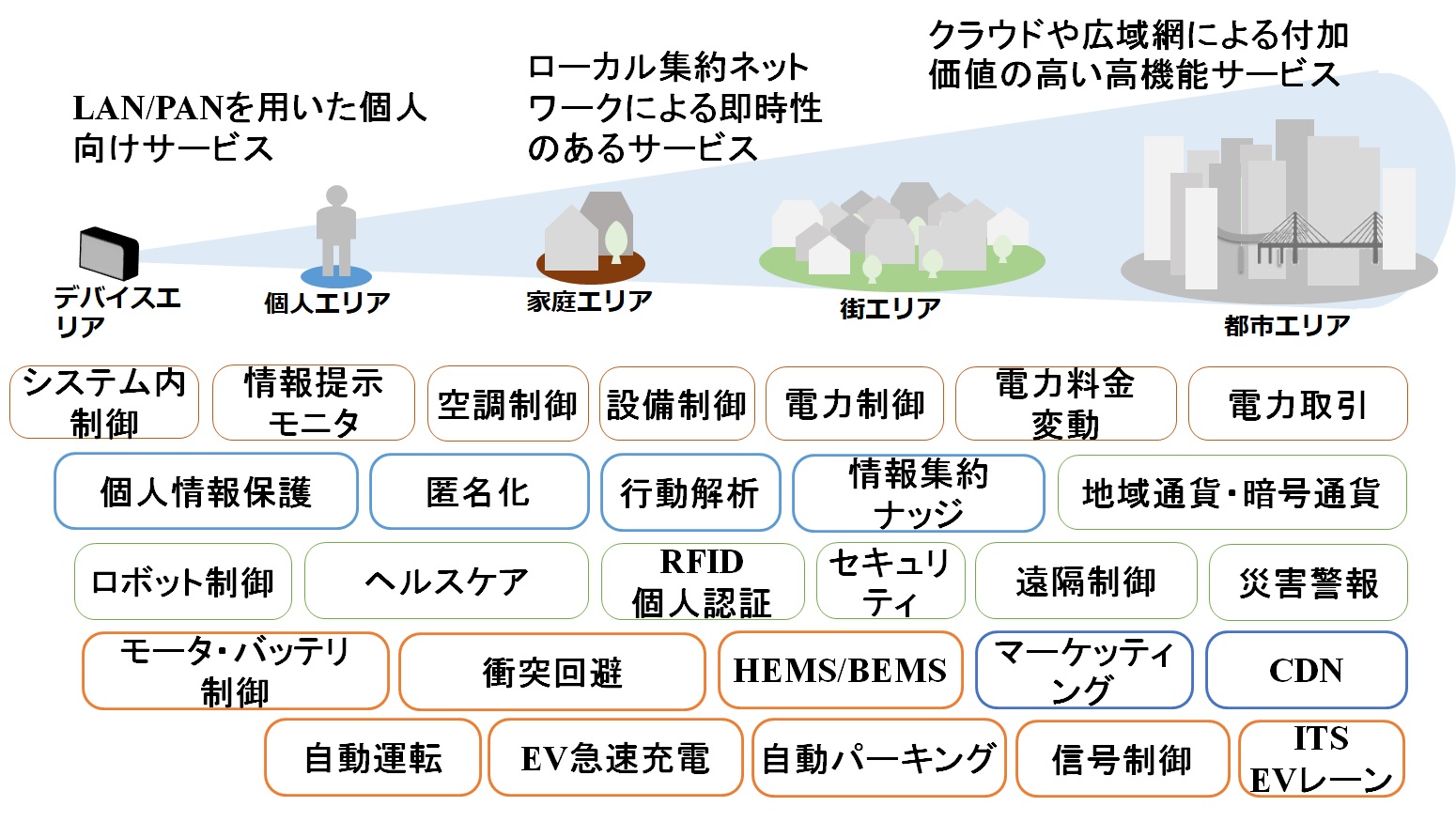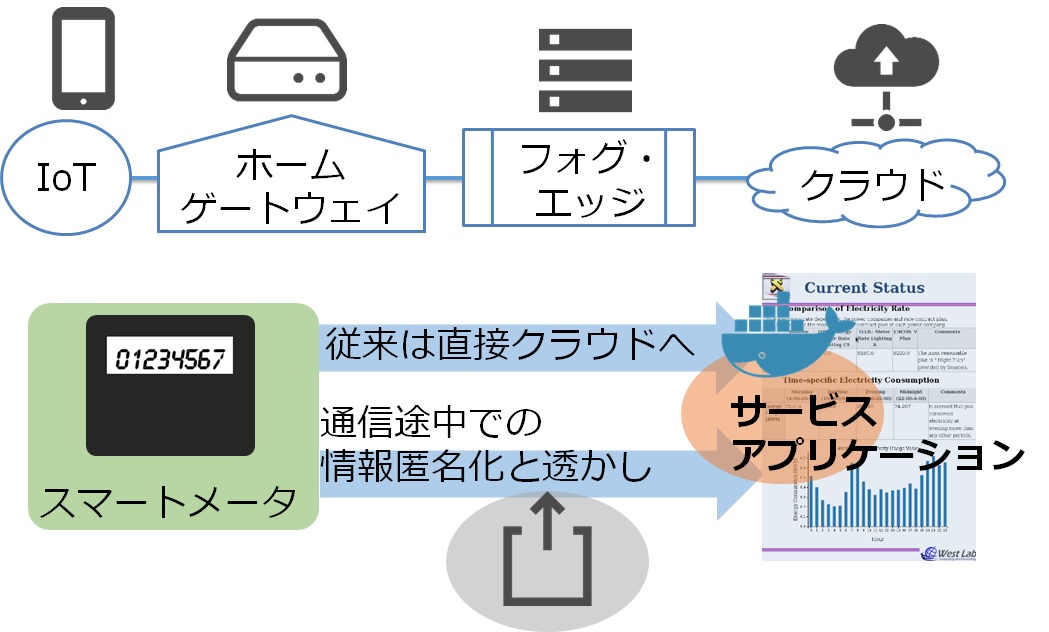Information infrastructure in a new city opened up by edge computing and IoT
Why smart communities and edge computing?
Is edge computing low latency because it’s closer to the user than the cloud? And is it efficient? Or is edge computing more efficient overall because it only earns communication delays and the cloud has shorter computation delays? From this perspective, the benefits of edge computing are extremely limited.
Edge and fog computing will increase the number of candidates for service provision locations, and increase new function provision locations and opportunities such as using the right person in the right place and concealing its existence to provide services. In this respect, edge computing has a great advantage. Therefore, Nishi Laboratory is developing an information infrastructure based on edge computing.

- Communication sensor (intermediate exploitation of information), add-on (forgery / alteration of information)
- “Network transparency” There is no change in the IoT terminal, and it does not make you feel that it was processed in the middle
- Since it is not an end host such as “integrity” cloud, all communication can be seen.
- “Positionability” We can provide services anywhere
- “Transparent add-on” Extends stealth-powerless IoT functions and security in the middle of the network
- Specific service example
- “Encapsulation of information” Anonymize personal information that goes out at the edge and fix the information in the area
- “Coloring of information” Improves security by adding a digital watermark to anonymized information at the edge
- “Security Extension” Add security at the edge to IoT
- “Transparent load balancing” Automatic load balancing without any extension to the client


